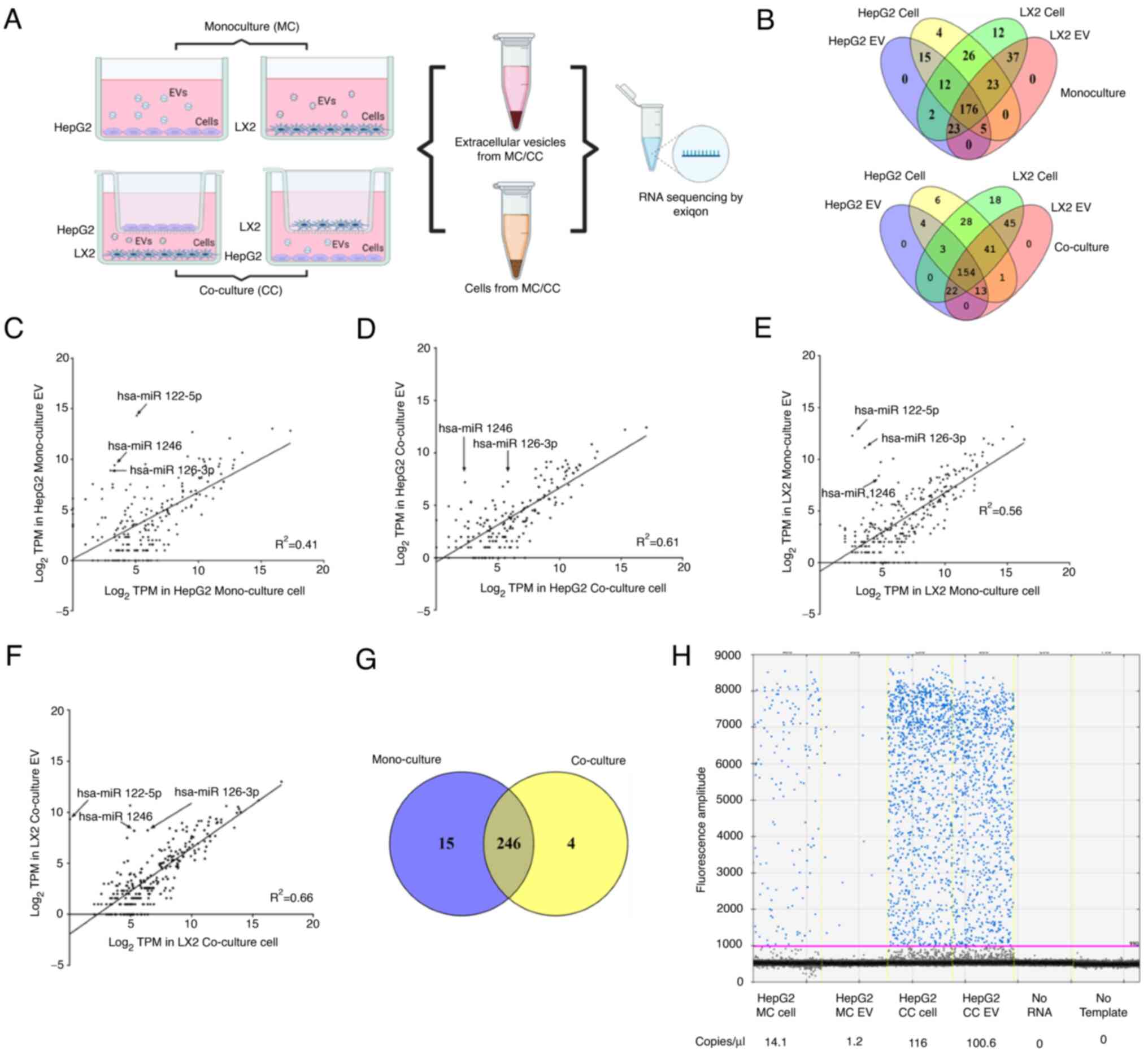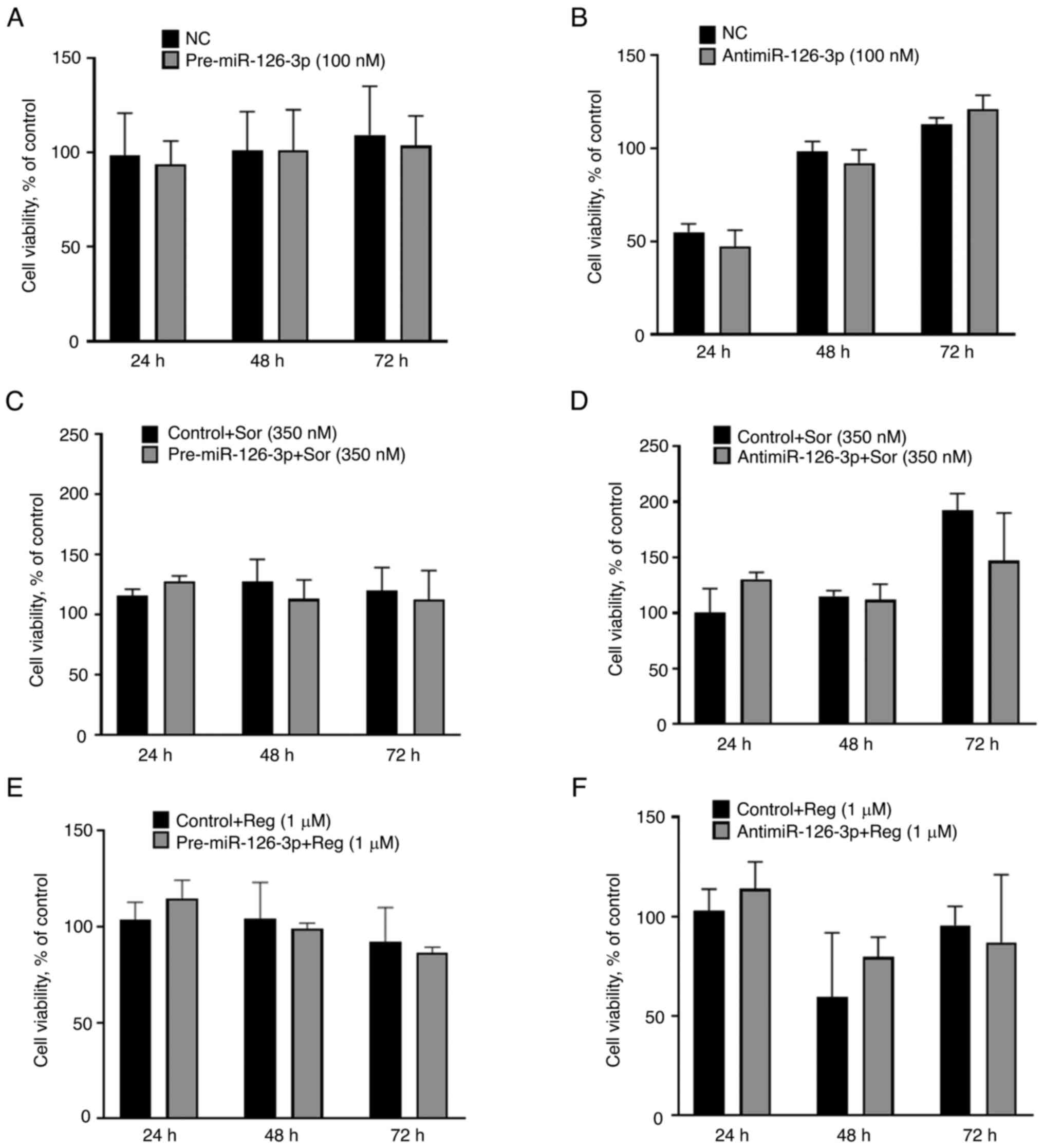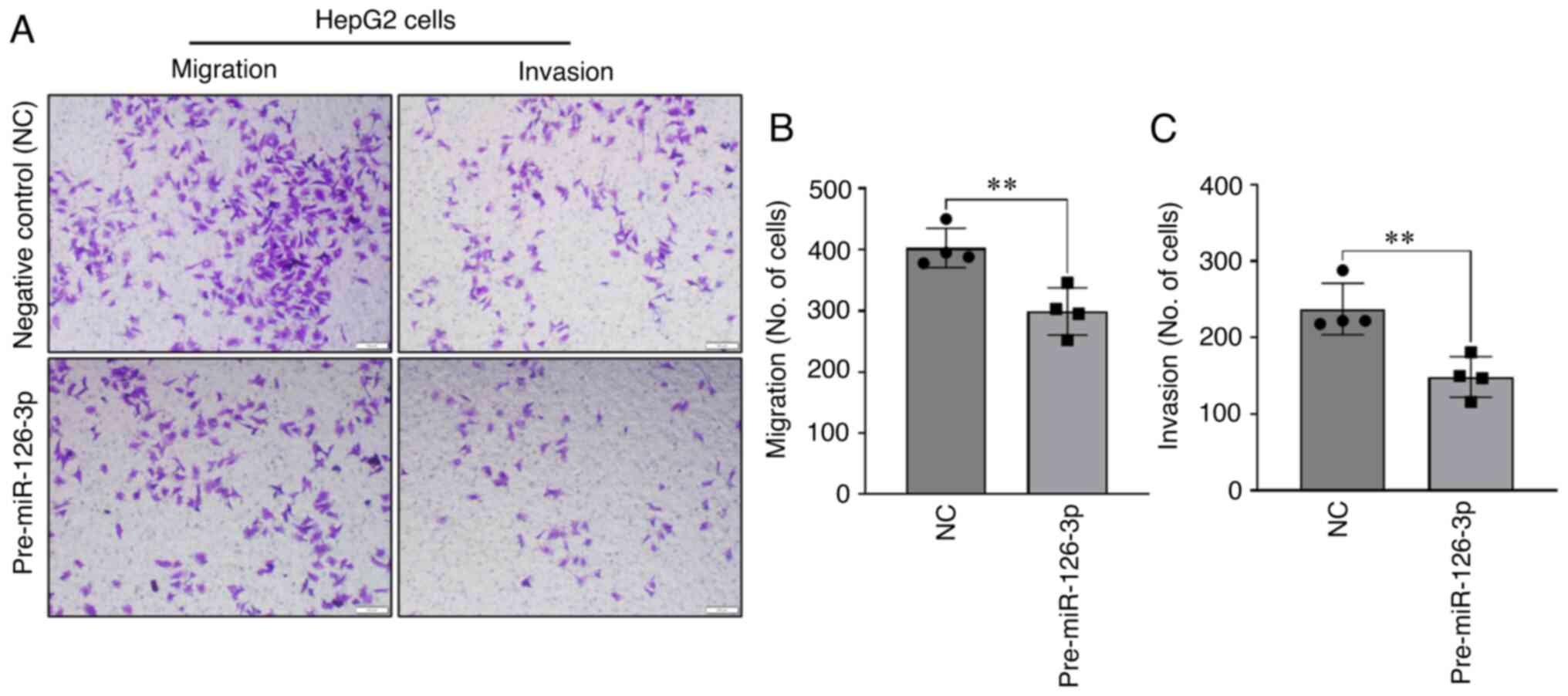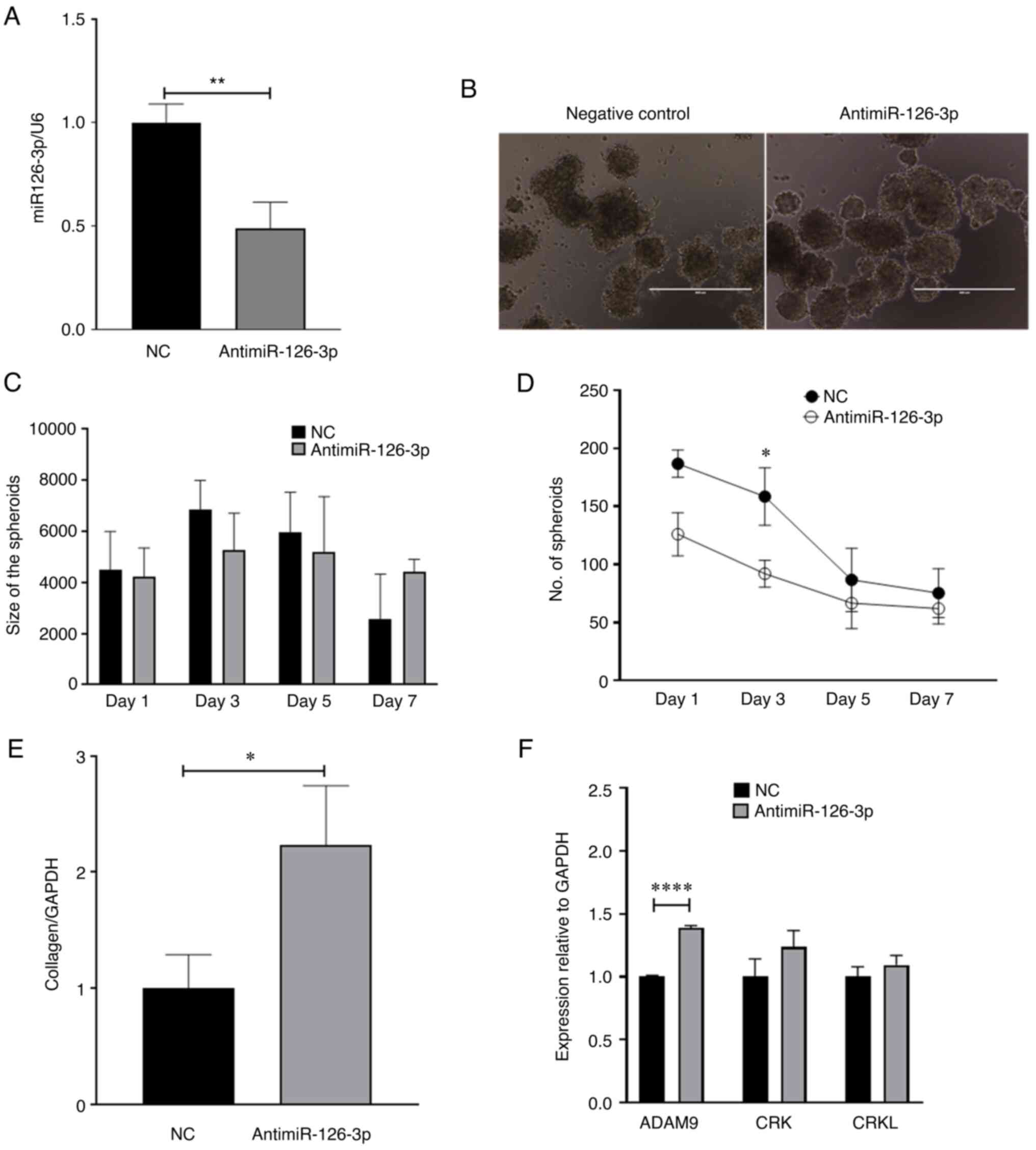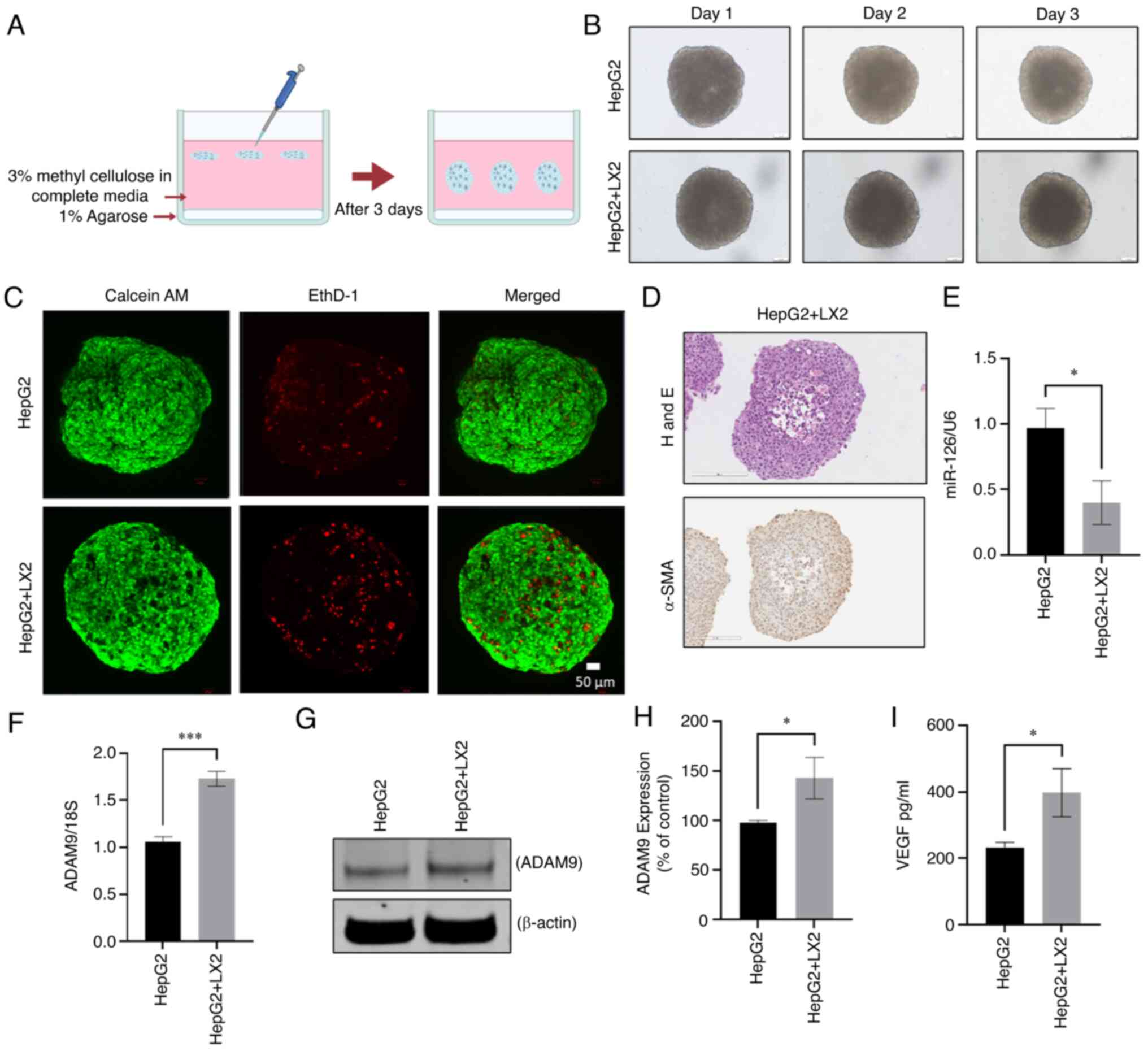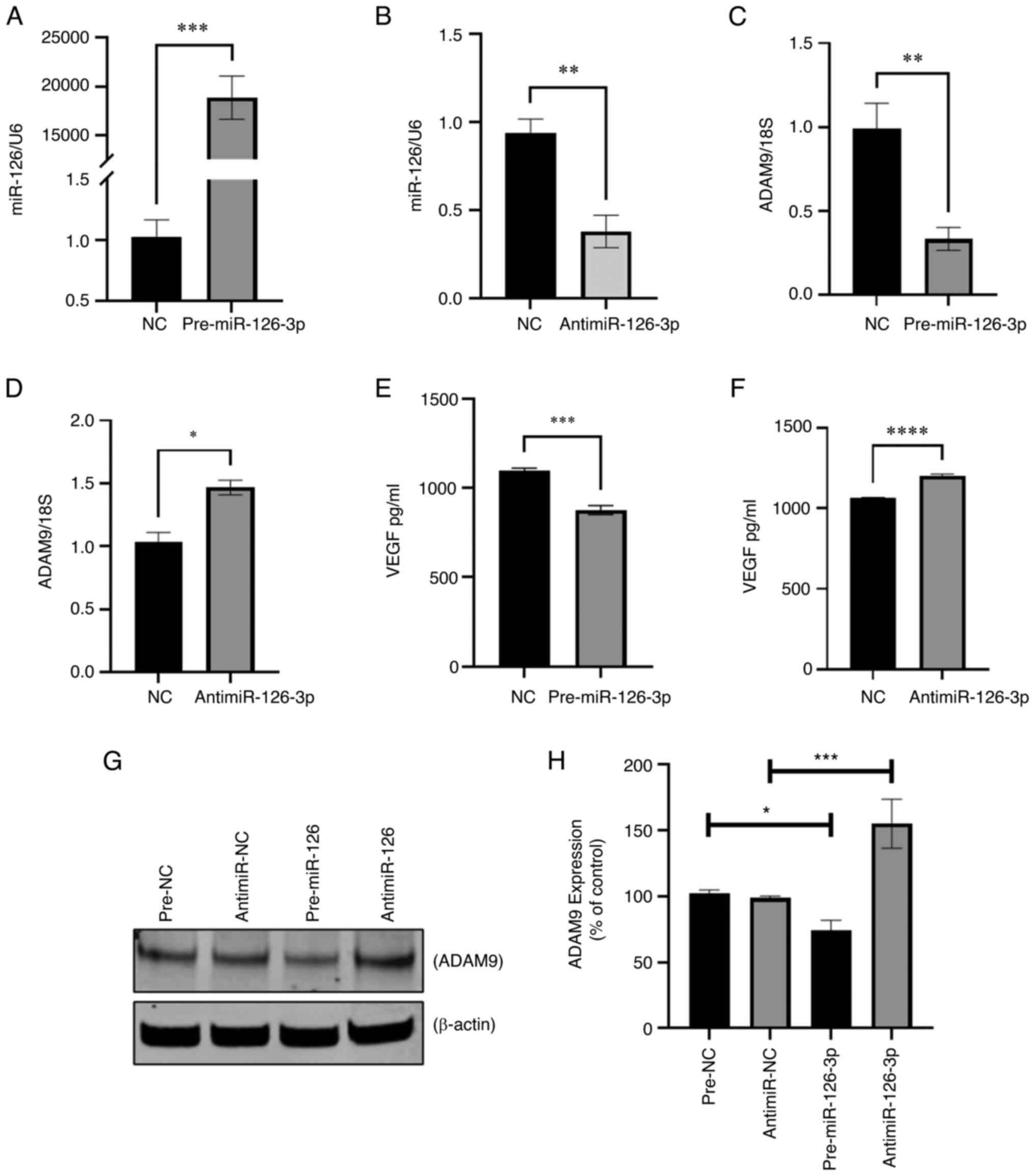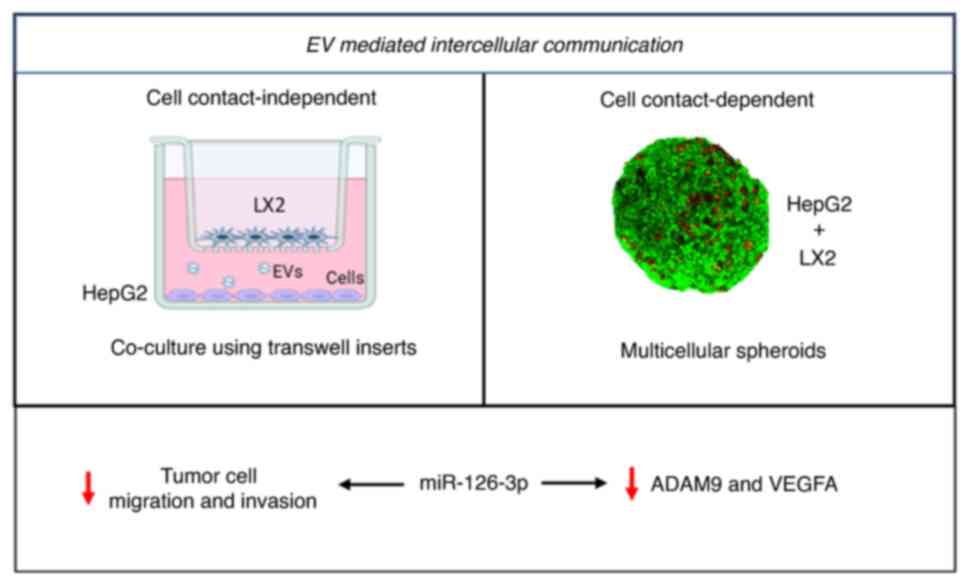|
1
|
Mbeunkui F and Johann DJ Jr: Cancer and
the tumor microenvironment: A review of an essential relationship.
Cancer Chemother Pharmacol. 63:571–582. 2009. View Article : Google Scholar
|
|
2
|
Hanahan D and Weinberg RA: Hallmarks of
cancer: The next generation. Cell. 144:646–674. 2011. View Article : Google Scholar : PubMed/NCBI
|
|
3
|
Wang X, Hassan W, Jabeen Q, Khan GJ and
Iqbal F: Interdependent and independent multidimensional role of
tumor microenvironment on hepatocellular carcinoma. Cytokine.
103:150–159. 2018. View Article : Google Scholar
|
|
4
|
Tahmasebi Birgani M and Carloni V: Tumor
microenvironment, a paradigm in hepatocellular carcinoma
progression and therapy. Int J Mol Sci. 18:4052017. View Article : Google Scholar : PubMed/NCBI
|
|
5
|
Kamil F and Rowe JH: How does the tumor
microenvironment play a role in hepatobiliary tumors? J
Gastrointest Oncol. 9:180–195. 2018. View Article : Google Scholar : PubMed/NCBI
|
|
6
|
Balogh J, Victor D III, Asham EH,
Burroughs SG, Boktour M, Saharia A, Li X, Ghobrial RM and Monsour
HP Jr: Hepatocellular carcinoma: A review. J Hepatocell Carcinoma.
3:41–53. 2016. View Article : Google Scholar : PubMed/NCBI
|
|
7
|
Yang S, Yang L, Li X, Li B, Li Y, Zhang X,
Ma Y, Peng X, Jin H and Li H: New insights into autophagy in
hepatocellular carcinoma: Mechanisms and therapeutic strategies. Am
J Cancer Res. 9:1329–1353. 2019.PubMed/NCBI
|
|
8
|
Baglieri J, Brenner DA and Kisseleva T:
The role of fibrosis and liver-associated fibroblasts in the
pathogenesis of hepatocellular carcinoma. Int J Mol Sci.
20:17232019. View Article : Google Scholar : PubMed/NCBI
|
|
9
|
Song Y, Kim SH, Kim KM, Choi EK, Kim J and
Seo HR: Activated hepatic stellate cells play pivotal roles in
hepatocellular carcinoma cell chemoresistance and migration in
multicellular tumor spheroids. Sci Rep. 6:367502016. View Article : Google Scholar : PubMed/NCBI
|
|
10
|
Laurenzana I, Lamorte D, Trino S, De Luca
L, Ambrosino C, Zoppoli P, Ruggieri V, Del Vecchio L, Musto P,
Caivano A and Falco G: Extracellular vesicles: A new prospective in
crosstalk between microenvironment and stem cells in hematological
malignancies. Stem Cells Int. 2018:98631942018. View Article : Google Scholar : PubMed/NCBI
|
|
11
|
Bebelman MP, Smit MJ, Pegtel DM and Baglio
SR: Biogenesis and function of extracellular vesicles in cancer.
Pharmacol Ther. 188:1–11. 2018. View Article : Google Scholar : PubMed/NCBI
|
|
12
|
Jabalee J, Towle R and Garnis C: The role
of extracellular vesicles in cancer: Cargo, function, and
therapeutic implications. Cells. 7:932018. View Article : Google Scholar : PubMed/NCBI
|
|
13
|
Yang J, Li C, Zhang L and Wang X:
Extracellular vesicles as carriers of non-coding RNAs in liver
diseases. Front Pharmacol. 9:4152018. View Article : Google Scholar : PubMed/NCBI
|
|
14
|
Vu LT, Peng B, Zhang DX, Ma V,
Mathey-Andrews CA, Lam CK, Kiomourtzis T, Jin J, McReynolds L,
Huang L, et al: Tumor-secreted extracellular vesicles promote the
activation of cancer-associated fibroblasts via the transfer of
microRNA-125b. J Extracell Vesicles. 8:15996802019. View Article : Google Scholar : PubMed/NCBI
|
|
15
|
Au Yeung CL: Co NN, Tsuruga T, Yeung TL,
Kwan SY, Leung CS, Li Y, Lu ES, Kwan K, Wong KK, et al Exosomal
transfer of stroma-derived miR21 confers paclitaxel resistance in
ovarian cancer cells through targeting APAF1. Nat Commun.
7:111502016. View Article : Google Scholar : PubMed/NCBI
|
|
16
|
Lee H, Abston E, Zhang D, Rai A and Jin Y:
Extracellular vesicle: An emerging mediator of intercellular
crosstalk in lung inflammation and injury. Front Immunol.
9:9242018. View Article : Google Scholar : PubMed/NCBI
|
|
17
|
Xu L, Hui A, Albanis E, Arthur MJ, O'Byrne
SM, Blaner WS, Mukherjee P, Friedman SL and Eng FJ: Human hepatic
stellate cell lines, LX-1 and LX-2: New tools for analysis of
hepatic fibrosis. Gut. 54:142–151. 2005. View Article : Google Scholar
|
|
18
|
Sayyed AA, Gondaliya P, Mali M, Pawar A,
Bhat P, Khairnar A, Arya N and Kalia K: MiR-155 inhibitor-laden
exosomes reverse resistance to cisplatin in a 3D tumor spheroid and
xenograft model of oral cancer. Mol Pharm. 18:3010–3025. 2021.
View Article : Google Scholar : PubMed/NCBI
|
|
19
|
Matsuda A, Ishiguro K, Yan IK and Patel T:
Extracellular vesicle-based therapeutic targeting of β-catenin to
modulate anticancer immune responses in hepatocellular cancer.
Hepatol Commun. 3:525–541. 2019. View Article : Google Scholar : PubMed/NCBI
|
|
20
|
Kogure T and Patel T: Isolation of
extracellular nanovesicle microRNA from liver cancer cells in
culture. Kosaka N: Circulating MicroRNAs. Methods in Molecular
Biology. 1024. Humana Press; Totowa, NJ: pp. 11–18. 2013,
View Article : Google Scholar
|
|
21
|
Schmittgen TD and Livak KJ: Analyzing
real-time PCR data by the comparative C(T) method. Nat Protoc.
3:1101–1108. 2008. View Article : Google Scholar : PubMed/NCBI
|
|
22
|
Sharma N, Soni R, Sharma M, Chatterjee S,
Parihar N, Mukarram M, Kale R, Sayyed AA, Behera SK and Khairnar A:
Chlorogenic acid: A polyphenol from coffee rendered neuroprotection
against rotenone-induced parkinson's disease by GLP-1 secretion.
Mol Neurobiol. 59:6834–6856. 2022. View Article : Google Scholar : PubMed/NCBI
|
|
23
|
Parekh P, Sharma N, Sharma M, Gadepalli A,
Sayyed AA, Chatterjee S, Kate A and Khairnar A: AMPK-dependent
autophagy activation and alpha-Synuclein clearance: A putative
mechanism behind alpha-mangostin's neuroprotection in a
rotenone-induced mouse model of Parkinson's disease. Metab Brain
Dis. Sep 30–2022.Epub ahead of print. View Article : Google Scholar : PubMed/NCBI
|
|
24
|
Gondaliya P, Sayyed AA, Bhat P, Mali M,
Arya N, Khairnar A and Kalia K: Mesenchymal stem cell-derived
exosomes loaded with miR-155 inhibitor ameliorate diabetic wound
healing. Mol Pharm. 19:1294–1308. 2022. View Article : Google Scholar : PubMed/NCBI
|
|
25
|
Takahashi K, Yan IK, Kogure T, Haga H and
Patel T: Extracellular vesicle-mediated transfer of long non-coding
RNA ROR modulates chemosensitivity in human hepatocellular cancer.
FEBS Open Bio. 4:458–467. 2014. View Article : Google Scholar : PubMed/NCBI
|
|
26
|
Hsieh MH, Tsai JP, Yang SF, Chiou HL, Lin
CL, Hsieh YH and Chang HR: Fisetin suppresses the proliferation and
metastasis of renal cell carcinoma through upregulation of
MEK/ERK-targeting CTSS and ADAM9. Cells. 8:9482019. View Article : Google Scholar : PubMed/NCBI
|
|
27
|
Kumar S, Davra V, Obr AE, Geng K, Wood TL,
De Lorenzo MS and Birge RB: Crk adaptor protein promotes PD-L1
expression, EMT and immune evasion in a murine model of
triple-negative breast cancer. Oncoimmunology. 7:e13761552017.
View Article : Google Scholar
|
|
28
|
Guo C, Zhao D, Zhang Q, Liu S and Sun MZ:
miR-429 suppresses tumor migration and invasion by targeting CRKL
in hepatocellular carcinoma via inhibiting Raf/MEK/ERK pathway and
epithelial-mesenchymal transition. Sci Rep. 8:23752018. View Article : Google Scholar : PubMed/NCBI
|
|
29
|
Carpino G, Morini S, Ginanni Corradini S,
Franchitto A, Merli M, Siciliano M, Gentili F, Onetti Muda A,
Berloco P, Rossi M, et al: Alpha-SMA expression in hepatic stellate
cells and quantitative analysis of hepatic fibrosis in cirrhosis
and in recurrent chronic hepatitis after liver transplantation. Dig
Liver Dis. 37:349–356. 2005. View Article : Google Scholar : PubMed/NCBI
|
|
30
|
Alhasan L: MiR-126 modulates angiogenesis
in breast cancer by targeting VEGF-A-mRNA. Asian Pac J Cancer Prev.
20:193–197. 2019. View Article : Google Scholar : PubMed/NCBI
|
|
31
|
Amann T, Bataille F, Spruss T, Mühlbauer
M, Gäbele E, Schölmerich J, Kiefer P, Bosserhoff AK and Hellerbrand
C: Activated hepatic stellate cells promote tumorigenicity of
hepatocellular carcinoma. Cancer Sci. 100:646–653. 2009. View Article : Google Scholar : PubMed/NCBI
|
|
32
|
Han S, Han L, Yao Y, Sun H, Zan X and Liu
Q: Activated hepatic stellate cells promote hepatocellular
carcinoma cell migration and invasion via the activation of
FAK-MMP9 signaling. Oncol Rep. 31:641–648. 2014. View Article : Google Scholar
|
|
33
|
Yu G, Jing Y, Kou X, Ye F, Gao L, Fan Q,
Yang Y, Zhao Q, Li R, Wu M and Wei L: Hepatic stellate cells
secreted hepatocyte growth factor contributes to the
chemoresistance of hepatocellular carcinoma. PLoS One.
8:e733122013. View Article : Google Scholar : PubMed/NCBI
|
|
34
|
Santamato A, Fransvea E, Dituri F,
Caligiuri A, Quaranta M, Niimi T, Pinzani M, Antonaci S and
Giannelli G: Hepatic stellate cells stimulate HCC cell migration
via laminin-5 production. Clin Sci (Lond). 121:159–168. 2011.
View Article : Google Scholar : PubMed/NCBI
|
|
35
|
Ma T, Wang Z, Yang Z and Chen J: Cluster
of differentiation 147 is a key molecule during hepatocellular
carcinoma cell-hepatic stellate cell cross-talk in the rat liver.
Mol Med Rep. 12:111–118. 2015. View Article : Google Scholar : PubMed/NCBI
|
|
36
|
Magistri P, Leonard SY, Tang CM, Chan JC,
Lee TE and Sicklick JK: The glypican 3 hepatocellular carcinoma
marker regulates human hepatic stellate cells via Hedgehog
signaling. J Surg Res. 187:377–385. 2014. View Article : Google Scholar : PubMed/NCBI
|
|
37
|
Jamshidi-Parsian A, Griffin RJ, Kore RA,
Todorova VK and Makhoul I: Tumor-endothelial cell interaction in an
experimental model of human hepatocellular carcinoma. Exp Cell Res.
372:16–24. 2018. View Article : Google Scholar : PubMed/NCBI
|
|
38
|
Wang X, Shen H, Zhangyuan G, Huang R,
Zhang W, He Q, Jin K, Zhuo H, Zhang Z, Wang J, et al: 14-3-3ζ
delivered by hepatocellular carcinoma-derived exosomes impaired
anti-tumor function of tumor-infiltrating T lymphocytes. Cell Death
Dis. 9:1592018. View Article : Google Scholar
|
|
39
|
Yu X, Zhang Q, Zhang X, Han Q, Li H, Mao
Y, Wang X, Guo H, Irwin DM, Niu G and Tan H: Exosomes from
macrophages exposed to apoptotic breast cancer cells promote breast
cancer proliferation and metastasis. J Cancer. 10:2892–2906. 2019.
View Article : Google Scholar : PubMed/NCBI
|
|
40
|
Basu S and Bhattacharyya SN: Insulin-like
growth factor-1 prevents miR-122 production in neighbouring cells
to curtail its intercellular transfer to ensure proliferation of
human hepatoma cells. Nucleic Acids Res. 42:7170–7185. 2014.
View Article : Google Scholar : PubMed/NCBI
|
|
41
|
Chiba M, Kimura M and Asari S: Exosomes
secreted from human colorectal cancer cell lines contain mRNAs,
microRNAs and natural antisense RNAs, that can transfer into the
human hepatoma HepG2 and lung cancer A549 cell lines. Oncol Rep.
28:1551–1558. 2012. View Article : Google Scholar : PubMed/NCBI
|
|
42
|
Sun T, Zhao N, Zhao XL, Gu Q, Zhang SW,
Che N, Wang XH, Du J, Liu YX and Sun BC: Expression and functional
significance of Twist1 in hepatocellular carcinoma: Its role in
vasculogenic mimicry. Hepatology. 51:545–556. 2010. View Article : Google Scholar
|
|
43
|
Tao J, Zhang R, Singh S, Poddar M, Xu E,
Oertel M, Chen X, Ganesh S, Abrams M and Monga SP: Targeting
β-catenin in hepatocellular cancers induced by coexpression of
mutant β-catenin and K-Ras in mice. Hepatology. 65:1581–1599. 2017.
View Article : Google Scholar
|
|
44
|
Hsu SH, Wang B, Kota J, Yu J, Costinean S,
Kutay H, Yu L, Bai S, La Perle K, Chivukula RR, et al: Essential
metabolic, anti-inflammatory, and anti-tumorigenic functions of
miR-122 in liver. J Clin Invest. 122:2871–2883. 2012. View Article : Google Scholar : PubMed/NCBI
|
|
45
|
Xue X, Zhang Y, Zhi Q, Tu M, Xu Y, Sun J,
Wei J, Lu Z, Miao Y and Gao W: MiR200-upregulated Vasohibin 2
promotes the malignant transformation of tumors by inducing
epithelial-mesenchymal transition in hepatocellular carcinoma. Cell
Commun Signal. 12:622014. View Article : Google Scholar : PubMed/NCBI
|
|
46
|
Wang F, Li L, Piontek K, Sakaguchi M and
Selaru FM: Exosome miR-335 as a novel therapeutic strategy in
hepatocellular carcinoma. Hepatology. 67:940–954. 2018. View Article : Google Scholar
|
|
47
|
Zhou Y, Ren H, Dai B, Li J, Shang L, Huang
J and Shi X: Hepatocellular carcinoma-derived exosomal miRNA-21
contributes to tumor progression by converting hepatocyte stellate
cells to cancer-associated fibroblasts. J Exp Clin Cancer Res.
37:3242018. View Article : Google Scholar : PubMed/NCBI
|
|
48
|
Fang T, Lv H, Lv G, Li T, Wang C, Han Q,
Yu L, Su B, Guo L, Huang S, et al: Tumor-derived exosomal
miR-1247-3p induces cancer-associated fibroblast activation to
foster lung metastasis of liver cancer. Nat Commun. 9:1912018.
View Article : Google Scholar : PubMed/NCBI
|
|
49
|
Chen H, Miao R, Fan J, Han Z, Wu J, Qiu G,
Tang H and Peng Z: Decreased expression of miR-126 correlates with
metastatic recurrence of hepatocellular carcinoma. Clin Exp
Metastasis. 30:651–658. 2013. View Article : Google Scholar : PubMed/NCBI
|
|
50
|
Du C, Lv Z, Cao L, Ding C, Gyabaah OA, Xie
H, Zhou L, Wu J and Zheng S: MiR-126-3p suppresses tumor metastasis
and angiogenesis of hepatocellular carcinoma by targeting LRP6 and
PIK3R2. J Transl Med. 12:2592014. View Article : Google Scholar : PubMed/NCBI
|
|
51
|
Gong C, Fang J, Li G, Liu HH and Liu ZS:
Effects of microRNA-126 on cell proliferation, apoptosis and tumor
angiogenesis via the down-regulating ERK signaling pathway by
targeting EGFL7 in hepatocellular carcinoma. Oncotarget.
8:52527–52542. 2017. View Article : Google Scholar : PubMed/NCBI
|
|
52
|
Xiang LY, Ou HH, Liu XC, Chen ZJ, Li XH,
Huang Y and Yang DH: Loss of tumor suppressor miR-126 contributes
to the development of hepatitis B virus-related hepatocellular
carcinoma metastasis through the upregulation of ADAM9. Tumour
Biol. 39:10104283177091282017. View Article : Google Scholar : PubMed/NCBI
|
|
53
|
Hamada S, Satoh K, Fujibuchi W, Hirota M,
Kanno A, Unno J, Masamune A, Kikuta K, Kume K and Shimosegawa T:
MiR-126 acts as a tumor suppressor in pancreatic cancer cells via
the regulation of ADAM9miR-126/ADAM9 regulates invasive growth of
pancreatic cancer. Mol Cancer Res. 10:3–10. 2012. View Article : Google Scholar
|
|
54
|
Jia AY, Castillo-Martin M, Bonal DM,
Sánchez-Carbayo M, Silva JM and Cordon-Cardo C: MicroRNA-126
inhibits invasion in bladder cancer via regulation of ADAM9. Br J
Cancer. 110:2945–2954. 2014. View Article : Google Scholar : PubMed/NCBI
|
|
55
|
Zuo J, Luo R, Huang C, Lou X and Li L:
MiR-126 enhances cisplatin chemosensitivity in hepatocellular
carcinoma cells by targeting IRS1. Trop J Pharm Res. 18:25–30.
2019. View Article : Google Scholar
|
|
56
|
Tan W, Lin Z, Chen X, Li W, Zhu S, Wei Y,
Huo L, Chen Y and Shang C: miR-126-3p contributes to sorafenib
resistance in hepatocellular carcinoma via downregulating SPRED1.
Ann Transl Med. 9:382021. View Article : Google Scholar : PubMed/NCBI
|
|
57
|
Hu M, Xiong S, Chen Q, Zhu S and Zhou X:
Novel role of microRNA-126 in digestive system cancers: From bench
to bedside. Oncol Lett. 17:31–41. 2019.PubMed/NCBI
|
|
58
|
Miko E, Margitai Z, Czimmerer Z, Várkonyi
I, Dezso B, Lányi A, Bacsó Z and Scholtz B: miR-126 inhibits
proliferation of small cell lung cancer cells by targeting SLC7A5.
FEBS Lett. 585:1191–1196. 2011. View Article : Google Scholar : PubMed/NCBI
|
|
59
|
Kitano M and Bloomston PM: Hepatic
stellate cells and microRNAs in pathogenesis of liver fibrosis. J
Clin Med. 5:382016. View Article : Google Scholar : PubMed/NCBI
|
|
60
|
Sayyed AA, Gondaliya P, Bhat P, Mali M,
Arya N, Khairnar A and Kalia K: Role of miRNAs in cancer
diagnostics and therapy: A recent update. Curr Pharm Des.
28:471–487. 2022. View Article : Google Scholar
|















